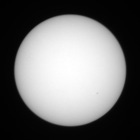Choose Target → Adjust Settings → Provide Information → Submit
Back to Thumbnail View
Solar System
Moon
- Object Type: Moon
- Distance: 384 thousand km (1.3 light seconds)
The Moon is Earth's only natural satellite and the only place in the universe that humans have visited! Before Galileo's observations, the Moon was thought to be a perfectly smooth sphere. Through his telescope, Galileo saw almost an earthly landscape, with mountain ranges, valleys and craters. This was the first step in ending the ancient dichotomy between the heavens and Earth. In your OWN image of the Moon, can you see the mountains and craters that Galileo observed?
Explore more with NASA's Lunar Reconnaissance Orbiter.
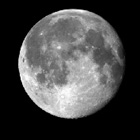
Jupiter
- Object Type: Planet
- Distance (closest to Earth): 600 million km (33 light minutes)
The largest planet in our Solar System, Jupiter is a ball of hydrogen and helium gas that could hold a thousand Earths. Jupiter gives out more heat than it receives from the Sun, and if it were bigger, its gravity would have turned it into a star! In your OWN image of Jupiter, zoom-in and look for the dark cloud bands near the equator. Because of its rapid rotation, (Jupiter has a 10-hour day), cloud systems wrap around the planet!
Explore more with NASA's Galileo space probe.
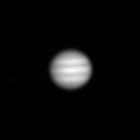
Jupiter's Moons
- Object Type: Moon
- Distance (closest to Earth): 600 million km (33 light minutes)
Galileo's observations of Jupiter led to the discovery of four large satellites – called the Galilean Moons. Each Galilean Moon is a unique world: Io is engulfed in lava and volcanoes, Callisto has the oldest and most cratered surface in the solar system, Ganymede is bigger than the planet Mercury, and Europa may have a vast underground ocean. Using your OWN observations of Jupiter, create a movie to watch the motions of the Galilean moons, and compare your observations to those of Galileo.
Explore more images of Jupiter's moons in NASA's Photojournal.

Venus
- Object Type: Planet
- Distance (closest to Earth): 37 million km (2 light minutes)
At first sight Venus is Earth's twin, but Venus is completely dry and enveloped in a dense choking atmosphere of carbon dioxide. Galileo's first telescopic observations of Venus in October, 1610 revealed that Venus showed phases, just like the Moon. The phases were evidence that Venus went around the Sun, not around the Earth. In your OWN image of Venus, can you see which phase Venus is showing?
Explore more images of Venus in NASA's Photojournal.

Saturn
- Object Type: Planet
- Distance (closest to Earth): 1.2 billion km (70 light minutes)
A gas giant second only in size to Jupiter, Saturn is dominated by its magnificent ring system made up of billions of particles of ice and rock. Galileo's observations of Saturn showed only a planet with "handles." It was another 40 years before Christian Huygens revealed the true nature of Saturn's rings. In your OWN image of Saturn, do you see rings or handles?
Explore more with NASA's Cassini space mission.
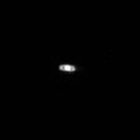
Mars
- Object Type: Planet
- Distance (closest to Earth): 56 million km (3.1 light minutes)
The rocky red planet Mars takes 687 Earth days to travel around the Sun. Its motion across the sky helped early astronomers determine the laws of planetary motion. Over the years, telescopes and rovers have revealed mountains and canyons on the planet's surface. Mars owes its rust-red color to iron-rich minerals in its soil. Because the planet's axis is tilted, its icy polar caps grow and shrink with the seasons of the Martian year. Can you see the polar caps in your OWN image of Mars?
Explore more images of Mars from NASA's Hubble Space Telescope.
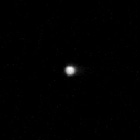
Uranus
- Object Type: Planet
- Distance (closest to Earth): 2.74 billion km (2.5 light hours)
Uranus is the third largest planet in our solar system, and has a unique quirk: it rotates on its side! Known as one of the ice giants, Uranus is cold and windy, with 13 known rings and 27 known moons. It is quite lonely this far away from Earth - only Voyager 2 has been able to fly by Uranus. Try taking your OWN images of this distant icy world and see what you may discover!
Explore more with NASA's Explore more with NASA's Voyager 2.
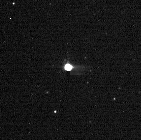
Neptune
- Object Type: Planet
- Distance (closest to Earth): 4.46 billion km (4.1 light hours)
Slightly smaller than Uranus, this ice giant was incorrectly identified as a fixed star by Galileo in 1612. In 1846, mathematical observations led astronomers to the discovery of Neptune as the eighth planet in our solar system. Since Neptune is the only planet in our solar system that is not visible to the unaided eye, use our remote telescopes to take your OWN pictures of this elusive world!
Explore more with NASA's Explore more with NASA's Voyager 2.
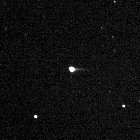
Pluto
- Object Type: Dwarf Planet
- Distance (closest to Earth): 4.43 billion km (4.1 light hours)
Pluto used to be our most distant planet, but was reclassified to be a dwarf planet in 2006. It is small in sizeb only about half the width of the United States! Even though Pluto is small, the days on Pluto sure are not. One day on Pluto lasts around 6 Earth days, and one full rotation around the Sun takes about 248 Earth years. That is plenty of time for you to take your OWN image of this tiny, slow-moving dwarf planet!
Explore more with NASA's Explore more with NASA's New Horizons.
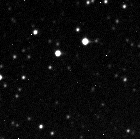
Asteroid
- Object Type: Asteroid
- Distance (closest to Earth): Variable
Asteroids are rocky remnants, most likely left over from when the Solar System formed. They come in various shapes and sizes. The smallest are a few feet across and the largest, Ceres, is a dwarf planet with a diameter of almost 1000 km! Most asteroids are in the asteroid belt, a ring of rocks between the orbits of Mars and Jupiter—but some do come near Earth! When you take your OWN image of an asteroid, you will receive three different images that catch the asteroid flying across the sky.
Explore more with NASA's Solar System Exploration.
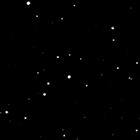
Sun
- Object Type: Star
- Distance (closest to Earth): 150 million km (8 light minutes)
The Sun is the nearest star to Earth and the only star in our Solar System. One million Earths could fit inside it. To an observer on Earth, the Sun's disk appears the same size in the sky as the full Moon, but in reality, more than 400 Moons could fit across the Sun. In 1610, Galileo observed small dark patches on the solar surface. These relatively cool areas are visible evidence of the Sun's magnetic field. Can you see any sunspots in your OWN image of the Sun? On June 5, 2012, the planet Venus passed in front of the Sun's disk. See the Image Archive!
Explore more with NASA's Solar Dynamics Observatory.
